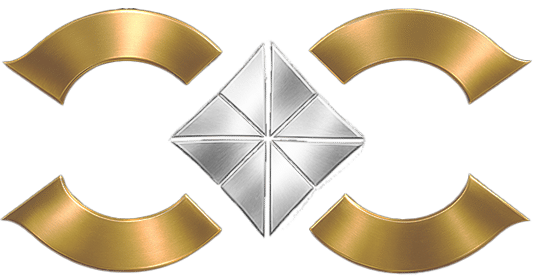Piercing Jewellery Care
We always check the jewellery upon receiving stock and also twice before fitting. You should also check your piercing jewellery please.
The jewellery is delicate by its very nature and is designed to be removable by the user, so they can come loose whilst handling or cleaning. Our quality control involves checking all the jewellery parts multiple times (3+) before fitting. To the best of our knowledge they are free from defects and are fitted securely.
You must regularly check and tighten the attachments on your jewellery.
Unfortunately, losses are not covered. Your purchased item is your property and is under your care and liability from the time you leave the studio or the time you receive your online order.
Jewellery types are explained below.
Do not apply any spray tans, make up, hair spray or cosmetic products of any kind on the jewellery, as this will accumulate buildup on the jewellery, making it look dull
The jewellery will then need to be removed for proper cleaning, for example in an ultrasonic or with a steam cleaner. Remember, when getting a new piercing, we do NOT recommend you to remove the jewellery yourself before at least 6 months have passed.
Talk to us about getting your jewellery professionally cleaned.
It is important to always rinse all soap away during each shower, and also tap dry the jewellery with a lint-free towel, rather than air-drying it, to ensure there is no long-term limescale buildup.
Jewellery Types
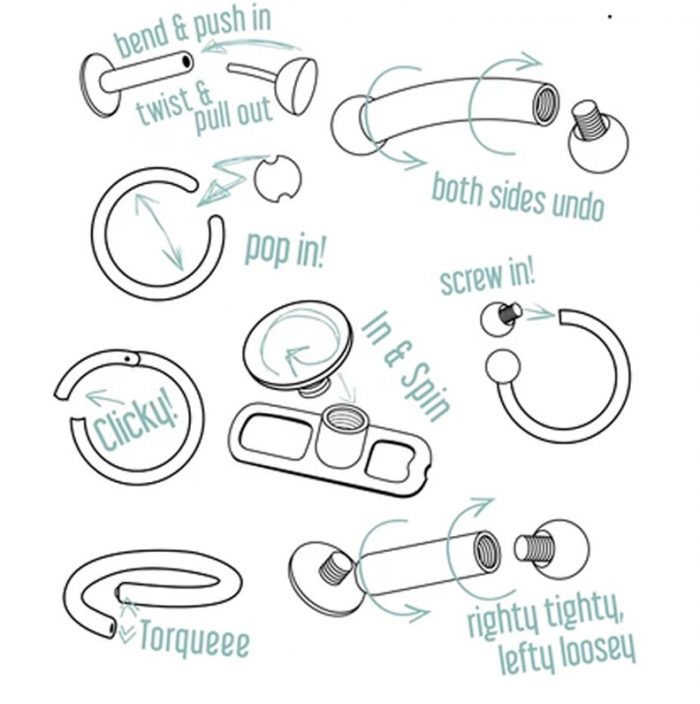
There are many types of Body Jewellery and here we will make a brief explanation of the most popular ones.
We will always offer to remove or fit our jewellery, and the service is mostly complimentary.
However, it is good to know how your jewellery works, to ensure you can remove or refit it after an accident or emergency.
Internally Threaded
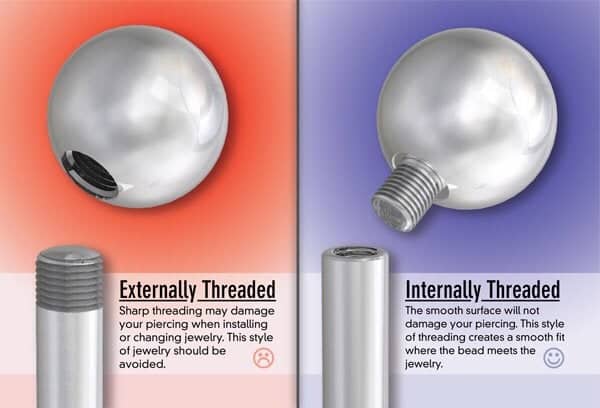
The most common type would be a Straight Labret Bar with a fixed back and where the front decorative part screws into the bar, clockwise.
However, maybe the back is also removable or maybe the post is a barbell with ball ends. In any case, the attachments screw into the bar, clockwise.
They must be regularly checked for tightness (righty-tighty), as if they become loose by accidental handling or touching, movement vibrations might cause them to unscrew completely and get lost.
To remove a Threaded jewellery, you need to get a good grip of the bar from the disk back. Tweezers can help with that.
Then also grab the front, and rotate it counterclockwise to unscrew it.
Push-In (Threadless, Press Fit)
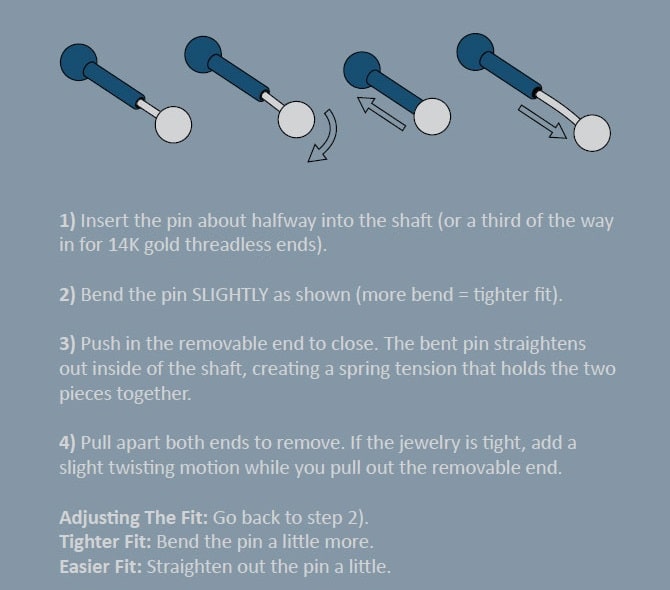
This will typically be a fixed back Labret Bar with a very thin (about 24g) opening in the middle.
The decorative part will have a thinner (25g) pin on the back, which can slide inside the bar.
You secure this by slightly bending the pin and inserting the pin inside the bar. Now, you can feel the tension while inserting the front, and this tension will hold the front in place.
If it was too easy to insert the jewellery, then a slight adjustment to the bend is needed.
All our pins will be sold pre-bent for a perfect fit with the assorted post, however, regular refitting of the jewellery will cause the pin to straighten, and it might need readjusting.
If you see that the front sticks out form the bar, and the thin pin is visible, gently and as straight as possible, push the front in.
There are many instructional videos online, you can search for ‘How threadless jewellery works’
To remove a Push-In Jewellery, you need to get a good grip of the bar from the disk back. Tweezers can help with that.
Then also grab the front, rotate it back and forth to break the tension and pull it away at the same time.
Removing the jewellery might straighten the pin.
Before re-fitting, it is important to check the jewellery and the bar in front of you. to ensure the pin still provides a secure fit, as explained above.
Hinged Segment Rings (Clickers)
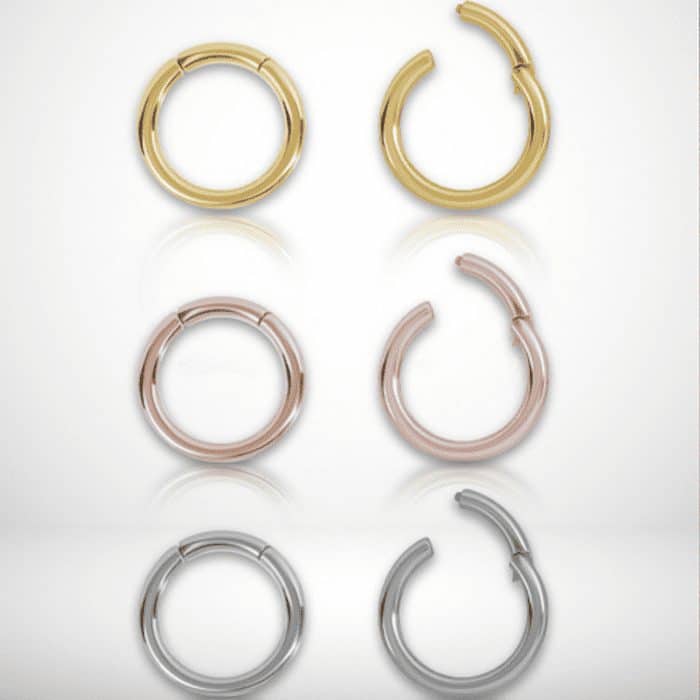
Clickers are rings with a small segment cut off, which is secured with a hinge. The segment part can be rotated and ‘click’ in place.
Violent mishandling of the jewellery might cause the click mechanism to soften.
The ring must be bent in such way by which there is a slight tension keeping the clicker closed.
If you feel that the jewellery clicks and re-opens too easily, or doesn’t click at all, we can adjust it in the shop.
Captive Bead Rings (CBRs)
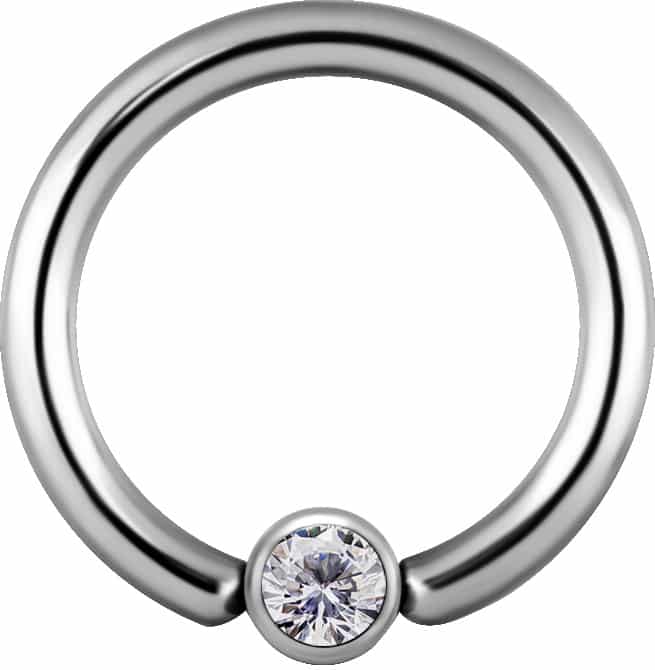
Those are rings with a small opening, in which a dimple bead can be squeezed in, secured in place by tension. They can be tricky to insert or remove, and the small diameter ones or the thicker ones will likely need tools.
Seam Rings (“Seamless”)
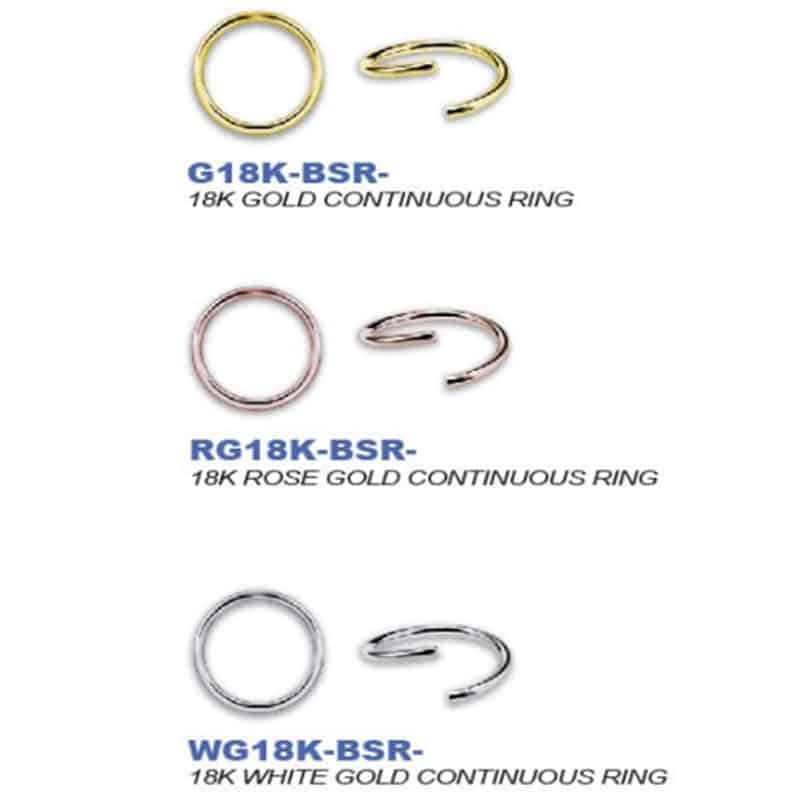
Those are continuous rings with one opening. You bend them opening sideways only, insert the jewellery, then bend them back into place.
